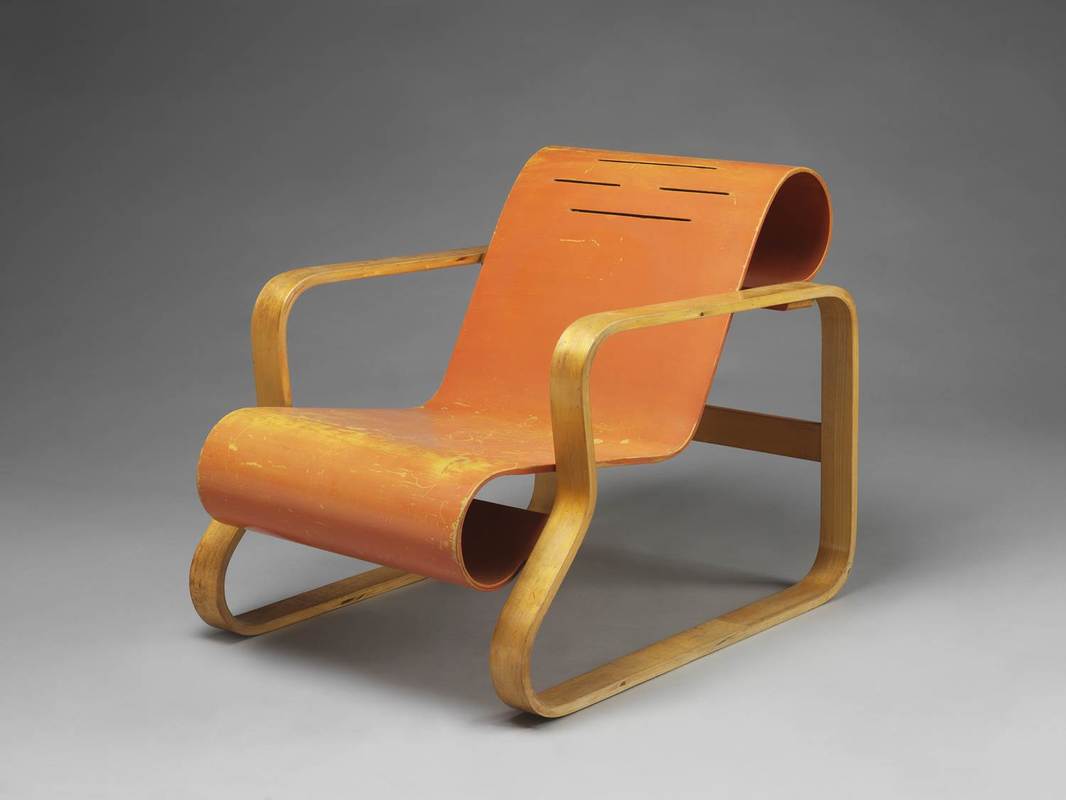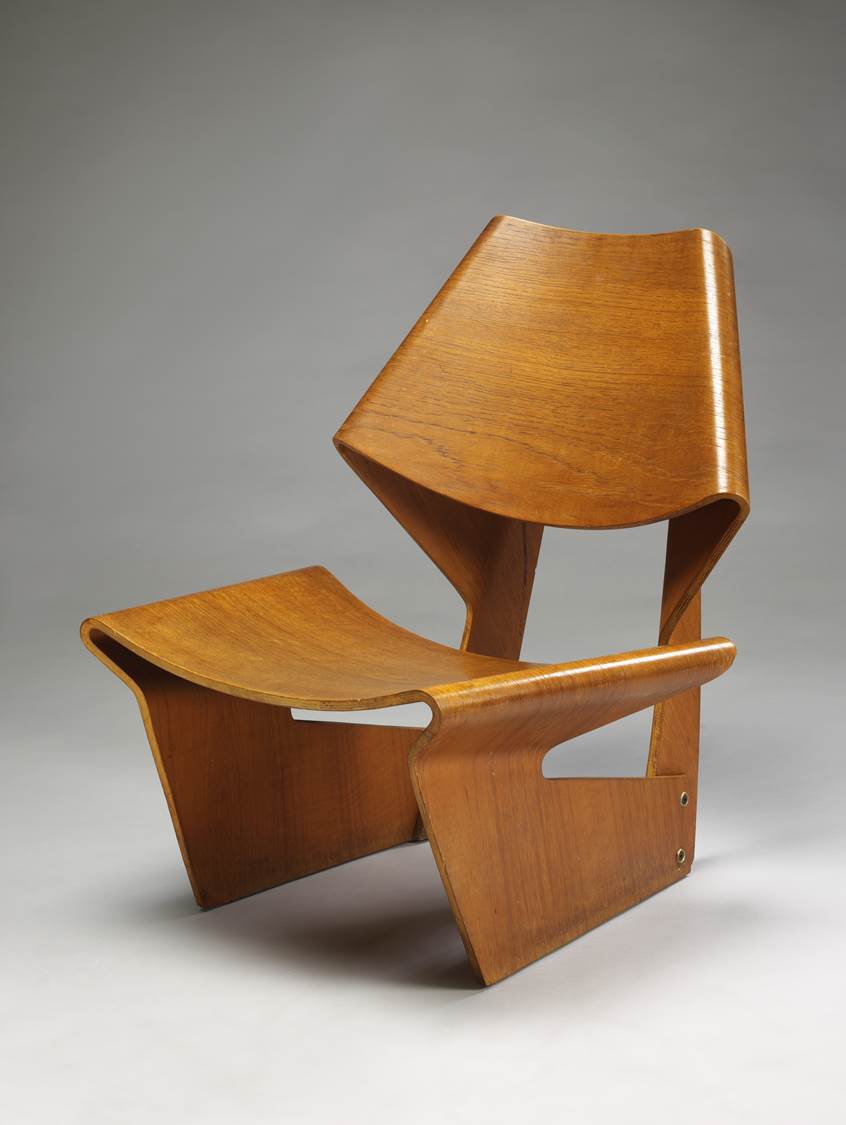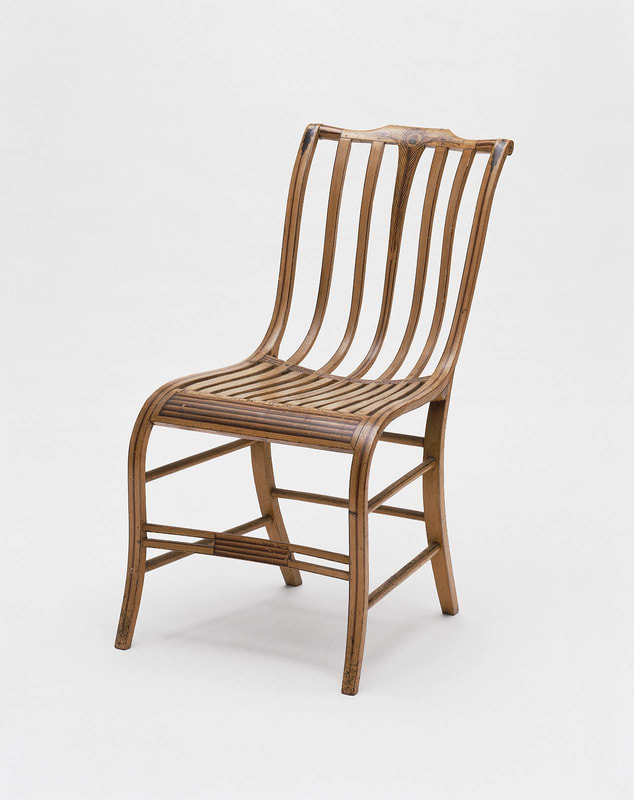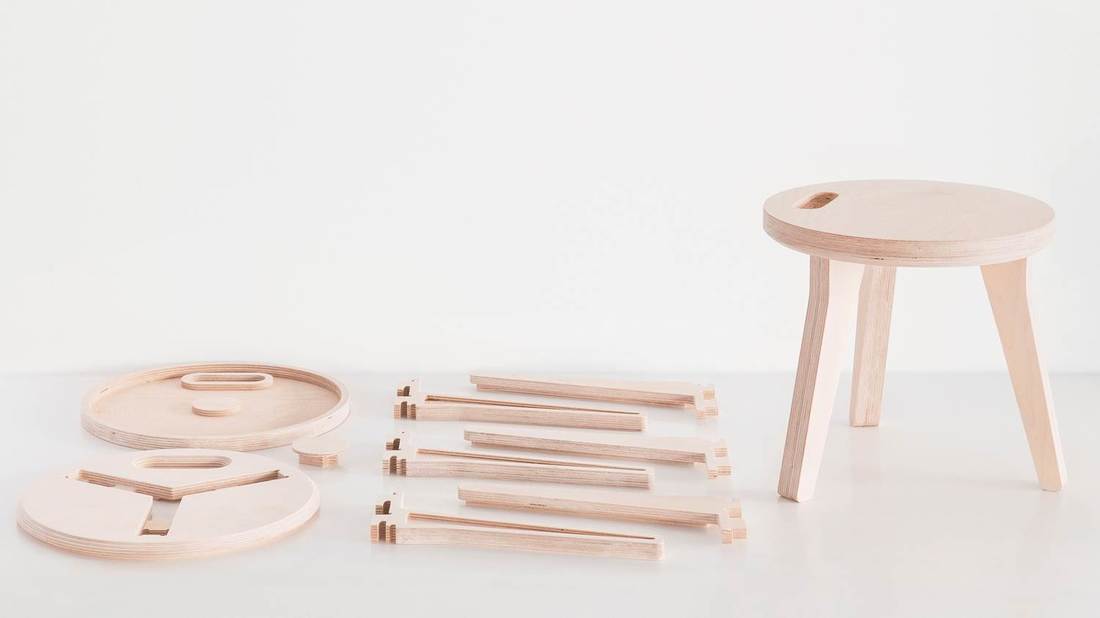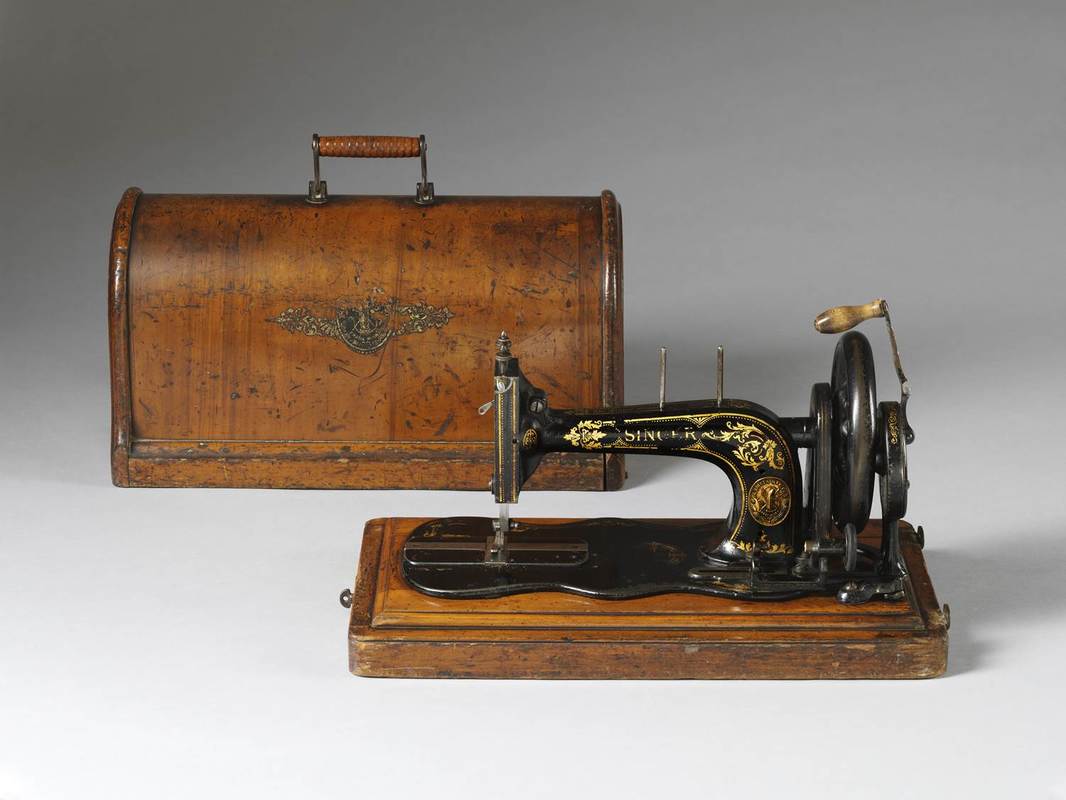I can still remember when my fascination with molded plywood furniture was born. It was in the early 90s, in first year graduate school, when I was introduced to the Elastic Chair, which Samuel Gragg designed in the early 19th century (below). Plywood is a unique material of extraordinary history, which was extensively examined by my mentor Derek E. Ostergard in his seminal publication of 1987. Plywood is neither precious nor expensive, as it is made of layers of veneers glued together perpendicular to one another, making it stronger than most woods. Yet, it has achieved the status of an avant-garde design material, young, and fresh forever, utilized as a tool for experimentations by some of the leading designers in the history of furniture design, Charles and Ray Eames, Arne Jacobsen, and Sori Yanagi, just to name three. Christopher Wilk, one of the world’s leading design curators has taken the challenge to revisit and reinvestigate the history of plywood, from its ancient use, to the 18th century, to the industrialization of the 19th century, to the perfecting of the technology in the postwar years, and to our day, when Irish designer Joseph Walsh has emerged as its most ambitious practitioner, and the material has acquired the allure of sustainabilty. Above: Alvar Aalto, armchair, Finland, 1930 © Alvar Aalto Museum, Photograph Victoria and Albert Museum. At the V&A until November 12.

